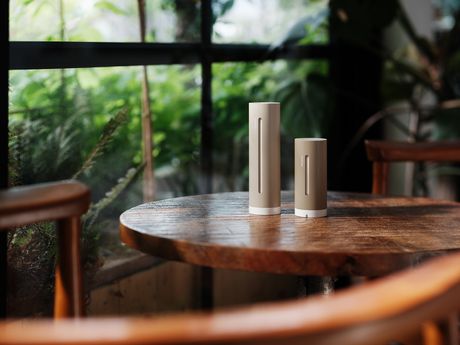
Netatmo unveils the new Weather Station ORIGINAL

Up to 50% off selected productsBuy

Motion sensors detect any movement that occurs within the device’s “field of vision”, or, in other words, the area within your home that the product monitors.
Motion detectors are able to pick up on sudden, suspicious movements within the area they cover. If any movement occurs within the area your home detectors are constantly scanning, your motion detectors will spring into action.
If you choose to incorporate several motion detectors into your home security system, your motion sensors will then trigger a defensive action: your home security alarm, indoor home security cameras, or emergency security lighting will go on, for example.
When the motion sensors detect any suspicious movement, the motion detectors will trigger the relevant alerts across your home security devices and products. This instant alert will trigger the home security set-up that you’ve created in your home, saving precious time in the event of an intrusion.
Prime your motion sensors to detect intruders’ movements and they’ll be able to trigger your home’s security alarm, raising awareness of the intrusion for you and your family (if you’re in the home), or passers-by and police patrols that may be in the area.
If you’ve integrated the motion detectors into home security systems including emergency lighting and home security cameras, the motion sensors will trigger these to turn on, or to start recording security footage.
In the case of smart home security systems, an alert from your integrated motion sensors will also enable a home security alert notification to be sent to your chosen smart devices. You’ll be informed of any home security issues as soon as possible, no matter where you are at the time.
So, motion detectors can be an integral part of a functional home security system, helping to keep your home, your family and your home’s contents safe from harm.
Plus, home security motion detectors will enable you to keep on top of the security situation in your home, raising the alert and deterring an intruder from continuing on your property by triggering your other home security products (as we’ve seen, these could be devices such as home security cameras, security alarms and emergency lighting).
Did you know that the latest smart motion sensors can tell the difference between suspicious movements that could point to there being an intruder in your home and normal, everyday motion? So, you can configure your home security motion sensors to only go off when there’s a real reason to – not when your pet wanders into the detector’s “view”! So, how does this aspect of the product work? The smart motion sensors simply analyse the amount of infrared radiation that’s emanating from the suspected intruder, creating an accurate profile to increase your home security.
So, what do infrared and Passive InfraRed (PIR) sensors have to do with your new home security motion sensors?
The motion detection devices you’ve been browsing are likely to have included infrared technology. These integrated infrared capacities enable the motion sensors to detect the natural infrared radiation that is emitted by living things and hot objects.
So, if an entity emitting infrared moves into your motion detectors’ “view”, the sensors will pick up on - and analyse - the infrared radiation that it’s giving out. So, it’s infrared radiation that allows your home security motion sensors to detect presence within your property.
If there’s infrared technology incorporated into the home security motion sensors you’re looking at installing as part of your home security system, there are likely to be called Passive InfraRed motion detectors or Passive InfraRed motion sensors.
This PIR designation tells you that the motion detectors will operate using infrared technology to detect movement within your home.
While PIR technology is often used for home security motion sensors, there are other wave-based motion detection technologies out there. Microwave motion sensors and ultrasonic motion sensors also detect waves that entities emit in order to pick up on their presence within your home.
While motion sensors can be a vital component of home security systems, motion detectors are useful in a wide range of other action-trigger systems. Let’s take a look at some examples of motion sensors’ wider functions.
In these systems, the motion sensors pick up on movement within their “view”, then automatically turn on their integrated lighting device. Lights come on without anyone doing anything!
For these set-ups, the motion detectors pick up on movement within the area they scan. When they’re triggered, they automatically open up the product into which they’re integrated. That could be a gate, a door or a lift door.
Less obviously, this same technology is also used in automatic taps and toilet flushes: the motion sensor detects the movement of the user’s hands within their “view”, then activates the running water or flush functions they’re linked up to.
Often, a small LED light indicates that the motion detector has picked up on the movement involved.

Burglary
Wireless motion sensors: how can you integrate these security products into your home?

Burglary
Presence sensors: why are these products useful?

Burglary
Presence detectors: which product model is best for your security set-up?

Burglary
Infrared sensors: why are they such vital products in an effective home security system?